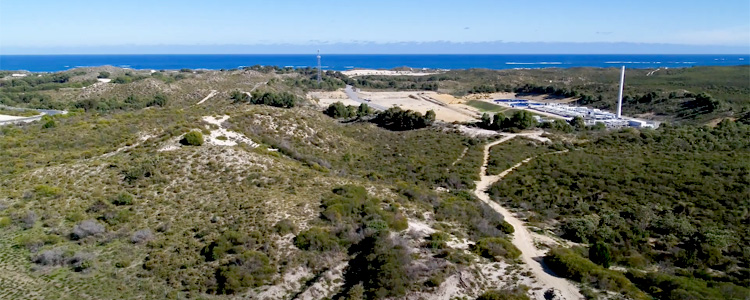Desalination
Over the past five years, almost half of Perth's water has been supplied by our seawater desalination plants. Desalination is a secure water source that doesn’t depend on rain. With declining rainfall and a growing population, Perth can't rely on streamflow into dams to supply its water needs. Desalinated seawater has increasingly filled the gap.
How does desalination work?
Seawater desalination is how we remove salt and impurities from seawater to produce drinking water. Our desalination plants use a reverse osmosis process. Seawater is pumped into the desalination plant from the Indian Ocean and passes through pre-treatment filtration to remove most particles.
The filtered seawater is then forced under pressure through special membranes. The osmosis process that occurs in nature is reversed. The pores in the membranes are so tiny that salt, bacteria, viruses and impurities separate from the seawater. In essence, they act like microscopic strainers. About half of the water that enters the plant from the sea becomes fresh drinking water. The salt and impurities removed from the seawater is then returned to the ocean via diffusers. This ensures the salt concentrate mixes quickly so it doesn't impact the marine environment.
We then treat the desalinated water to meet drinking water standards.
Read a transcript of this video
Frequently asked questions
Seawater desalination is four times more energy intensive than groundwater collection and over 40 times more energy intensive than water sourced from dams.
Our desalination plants meet stringent environmental protection criteria. They're designed to have minimal impact on the surrounding environment.
Our desalination plants are located near the Indian Ocean. Due to the high energy swell, the discharged concentrated seawater mixes quickly. The offshore discharge and intake pipelines are designed and located to minimise any effects on sensitive marine habitats, such as seagrasses and reef systems.
Our desalination plants
We currently operate 2 seawater desalination plants. To help reduce our dependence on rainfall and groundwater, we're preparing to deliver a new seawater desalination plant - Alkimos is the preferred site for the plant.

Perth Seawater Desalination Plant
Our first desalination plant in Kwinana started production in 2006. The plant now produces around 18% of Perth's water supply.

Southern Seawater Desalination Plant
Our Binningup seawater desalination plant started production in 2011. Around 30% of Perth's water supply is produced here.

Alkimos Seawater Desalination Plant
Alkimos is the preferred site for a future desalination plant to meet the needs of our growing city.